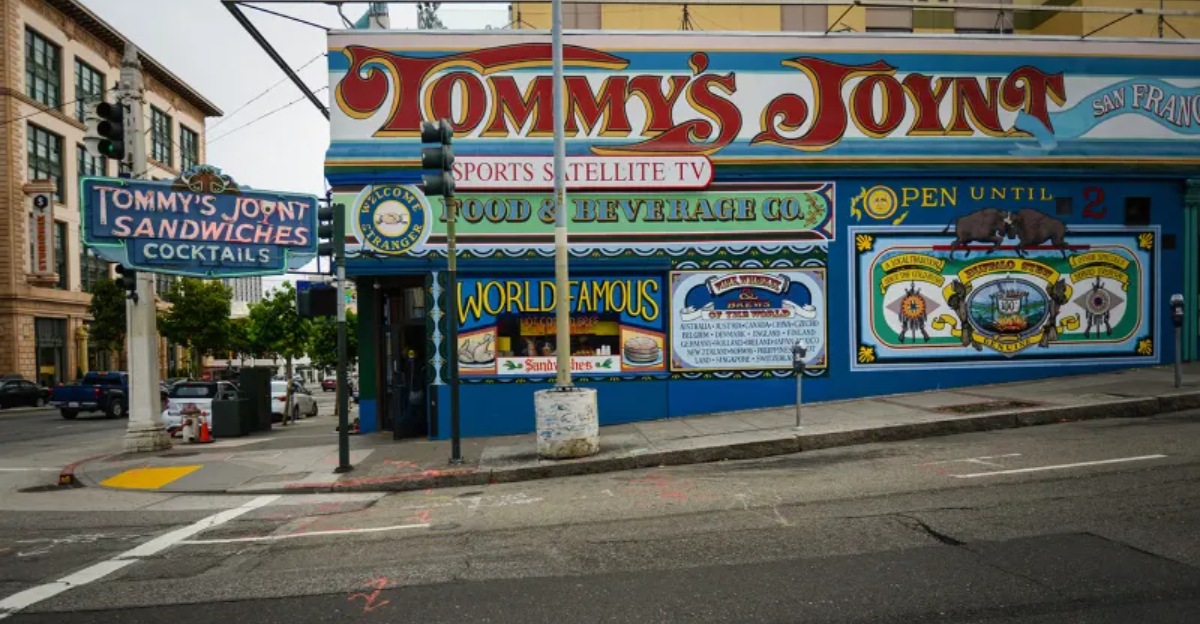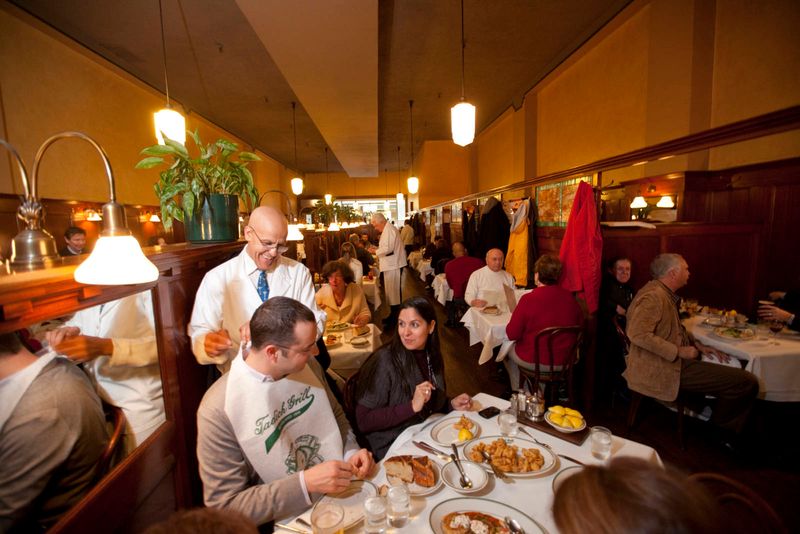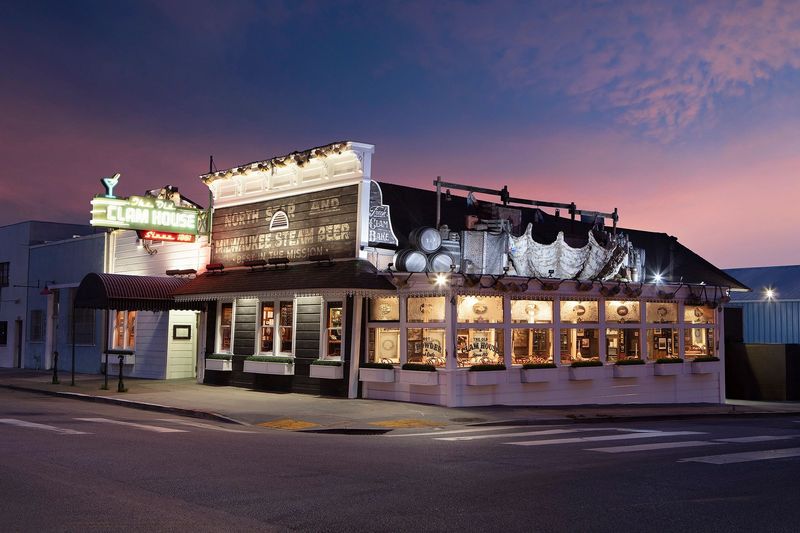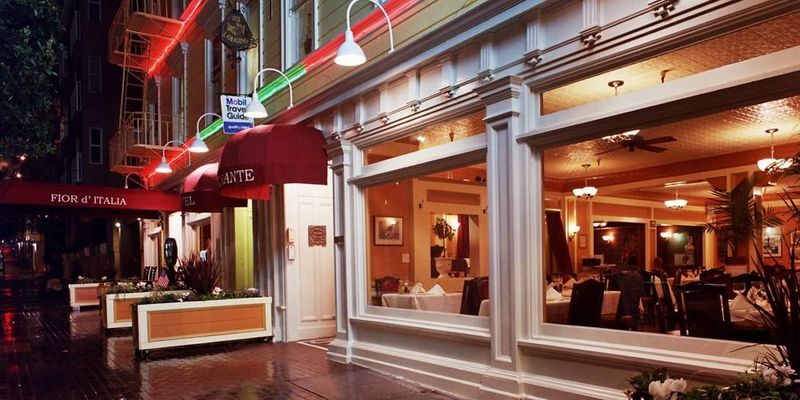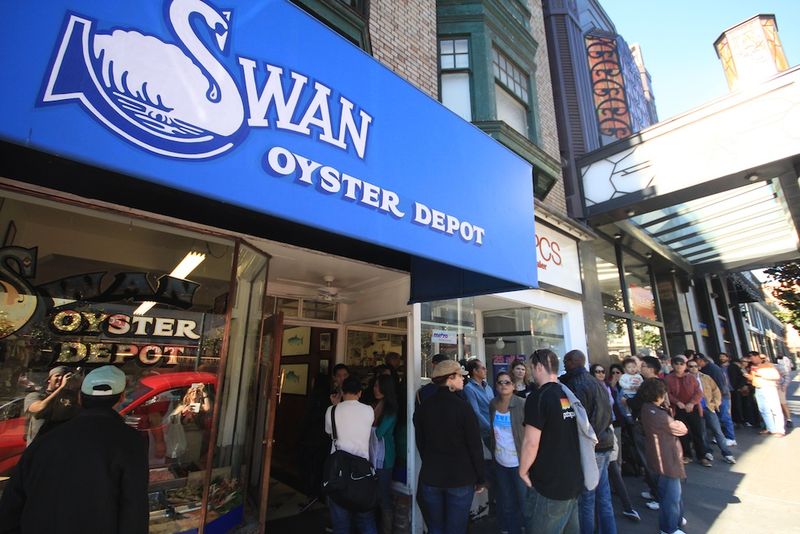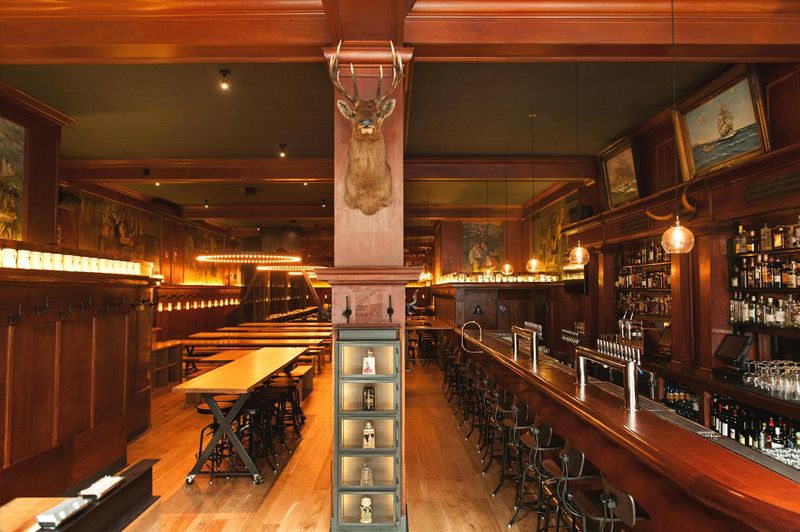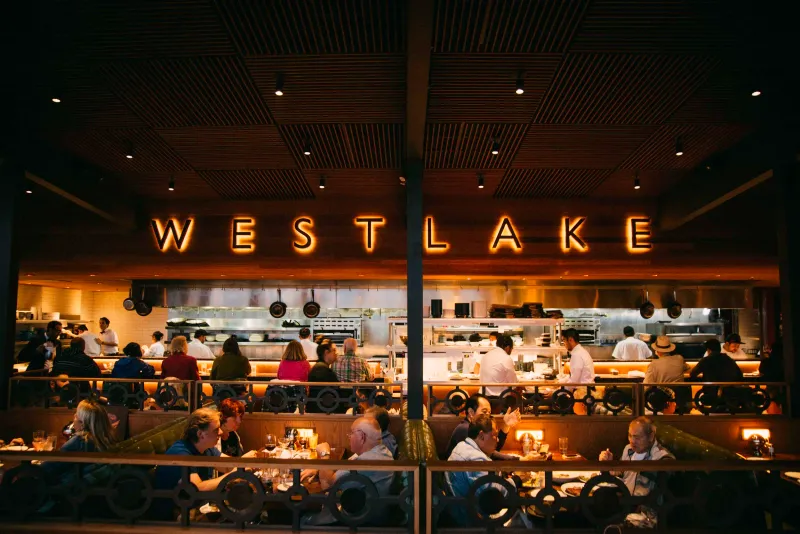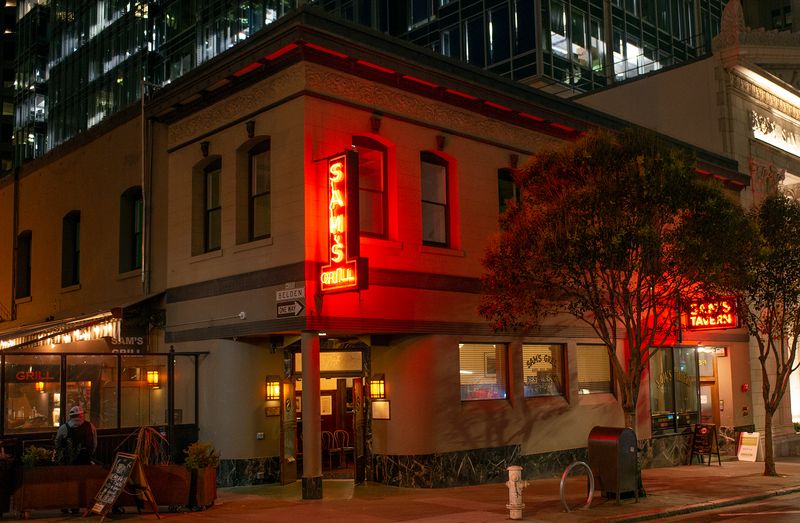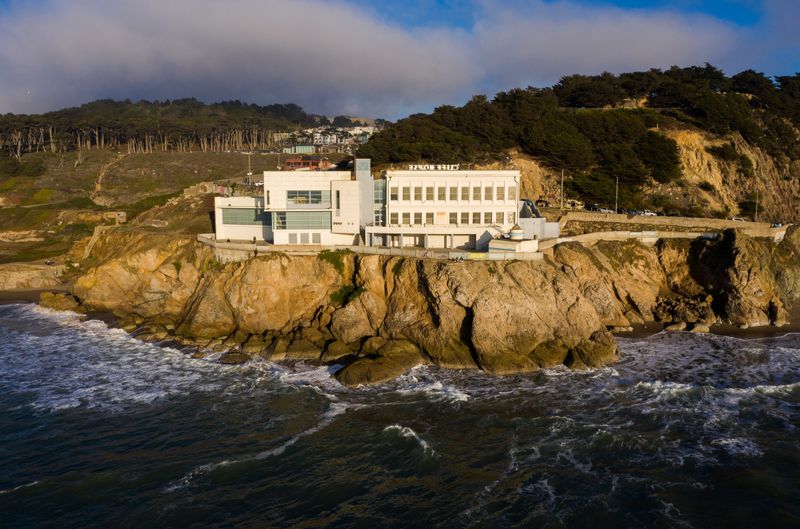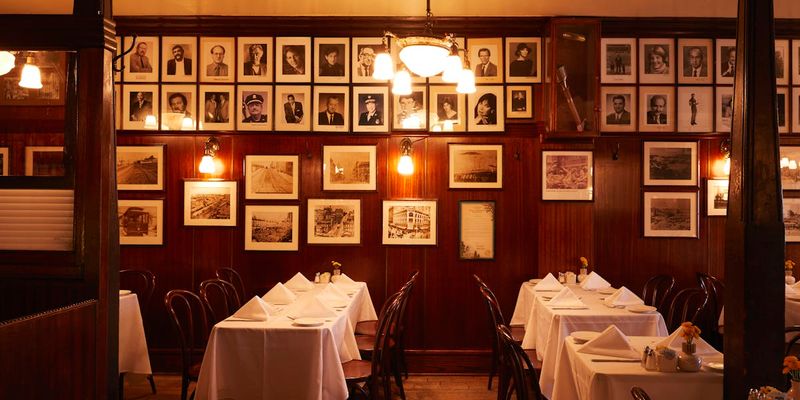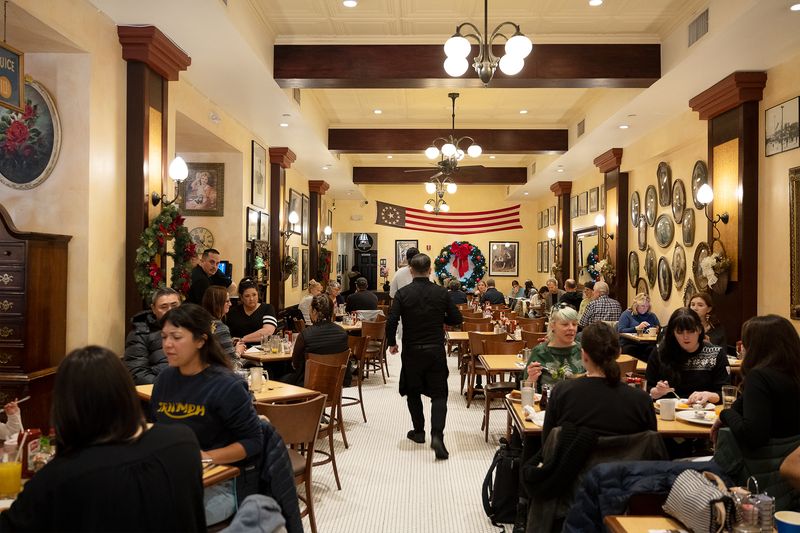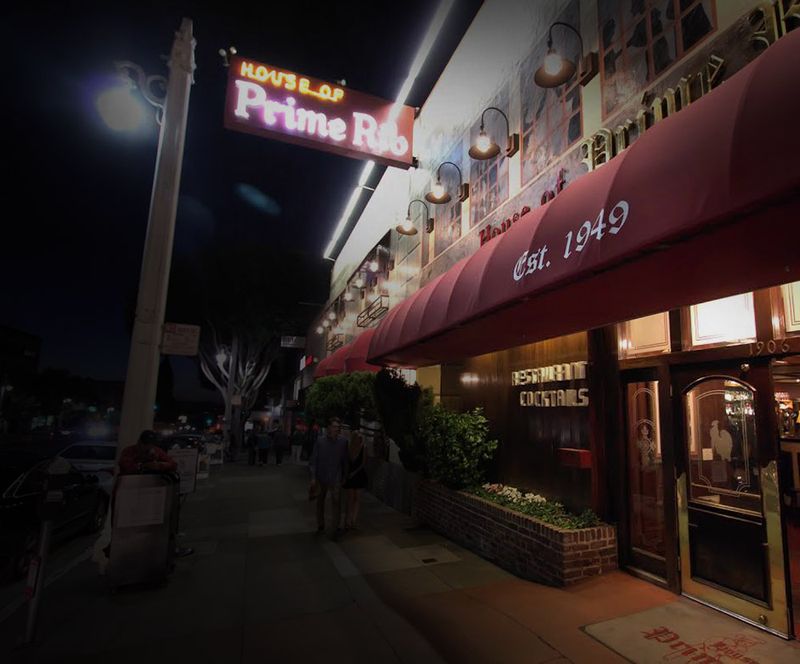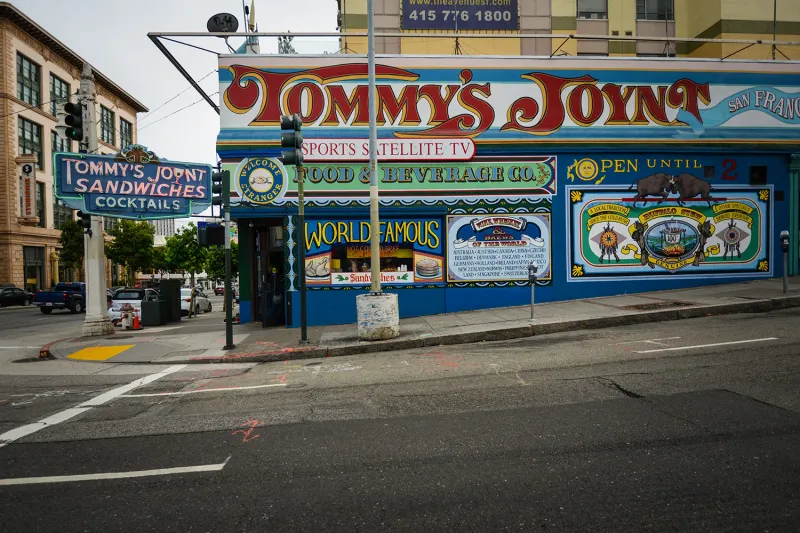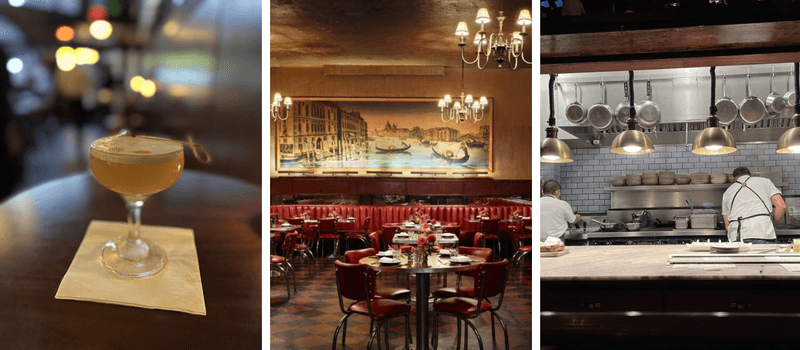San Francisco’s restaurant scene isn’t just about trendy new spots. Hidden throughout the city are culinary time capsules where generations have gathered to break bread. These historic eateries have witnessed earthquakes, wars, and cultural revolutions while continuing to serve classic dishes that have stood the test of time. From Gold Rush-era seafood joints to Prohibition-era Italian kitchens, these 13 establishments offer a delicious journey through San Francisco’s past.
1. Tadich Grill: California’s Oldest Culinary Treasure
Gold dust and seafood built the legend of Tadich Grill in 1849. What began as a humble coffee stand for hungry sailors evolved into California’s oldest continuously operating restaurant, surviving earthquakes and fires through sheer culinary determination.
The Art Deco interior feels frozen in time with brass fixtures and mahogany paneling where generations of San Franciscans have savored their signature seafood cioppino. White-jacketed servers still deliver platters of petrale sole and sand dabs to wooden booths where deals and celebrations have unfolded for over 170 years.
Their sourdough bread—a San Francisco tradition itself—starts every meal with a crusty reminder of the city’s enduring flavors.
2. The Old Clam House: Bayshore’s Seafaring Survivor
A wooden structure on Bayshore Boulevard has withstood the changing tides of San Francisco since 1861. The Old Clam House proudly maintains its title as the city’s oldest restaurant operating in its original location, surviving the 1906 earthquake when most of the city crumbled.
Patrons are greeted with a complimentary shot of clam juice—a tradition dating back to its earliest days. The nautical-themed dining room showcases weathered artifacts and vintage photographs documenting the restaurant’s journey through time.
Massive iron kettles of their famous clam chowder and cioppino continue to warm generations of San Franciscans just as they did for dock workers over a century ago.
3. Fior d’Italia: America’s First Italian Restaurant
“The Flower of Italy” bloomed in San Francisco during 1886 when Angelo Del Monte opened what would become America’s oldest Italian restaurant. Though its location has changed several times due to earthquakes and fires, the culinary traditions remained steadfast through five generations.
Red-checkered tablecloths and old-world charm create the perfect backdrop for their hand-rolled pasta and traditional Northern Italian recipes. The walls tell stories through sepia photographs of immigrant families who found comfort in familiar flavors from home.
Their signature veal saltimbocca remains virtually unchanged since the 19th century, offering modern diners an authentic taste of San Francisco’s Italian heritage that predates even the city’s famous North Beach district.
4. Swan Oyster Depot: The Seafood Counter That Time Forgot
Morning fog still rolls past the windows of Swan Oyster Depot as it has since 1903, when four Danish brothers transformed a fish delivery business into a seafood institution. The weathered marble counter seats just 18 lucky patrons who often queue around the block for a coveted stool.
Family members still shuck oysters behind the counter, their hands moving with practiced precision honed through decades. The menu—displayed on a simple chalkboard—hasn’t changed significantly in over a century, focusing on the freshest catches prepared with minimal intervention.
Their famous seafood cocktail, served in a simple glass with nothing but lemon and cocktail sauce, represents the restaurant’s enduring philosophy: when you have the freshest ingredients, simplicity is perfection.
5. Schroeder’s: The Financial District’s Bavarian Beer Hall
Steins clink and accordions play at Schroeder’s, where San Franciscans have celebrated with German beer since 1893. The Financial District institution survived Prohibition by cleverly transforming into a “coffee shop” that somehow served suspiciously beer-like beverages in ceramic mugs.
Towering beer steins line the walls above long communal tables where bankers and dock workers alike have shared hearty platters of schnitzel and sausages. The ornate carved wooden bar—imported directly from Germany—has supported elbows through economic booms and busts since the late 19th century.
During Oktoberfest, the restaurant transforms into a slice of Munich with traditional dancers performing between tables while servers in dirndls and lederhosen deliver massive pretzels and boot-shaped glasses of beer.
6. Original Joe’s: North Beach’s Italian-American Icon
From a 14-stool counter in the Tenderloin to a landmark establishment in North Beach, Original Joe’s has been serving oversized portions of Italian-American comfort food since 1937. The devastating fire of 2007 couldn’t extinguish this culinary flame—it simply relocated and reopened to the relief of devoted fans.
The exhibition kitchen lets diners watch flames leap from skillets as chefs prepare Joe’s Special—the scrambled egg, spinach, and ground beef creation that became a San Francisco classic. Red leather booths cradle generations of families celebrating special occasions over massive plates of chicken parmigiana.
Their signature tableside caesar salad service maintains the mid-century dining traditions that have largely disappeared elsewhere, creating theatrical moments between bites of garlic bread.
7. Sam’s Grill: Financial District’s Power Lunch Pioneer
Behind curtained booths that ensure privacy, financial deals have been sealed at Sam’s Grill since 1867. Originally a market stall selling fresh oysters during the Gold Rush, this establishment transformed into a full-service restaurant where discretion and tradition reign supreme.
The menu remains steadfastly classic with petrale sole, sand dabs, and sweetbreads prepared exactly as they were a century ago. Servers in formal attire—many who have worked there for decades—move efficiently between private booths, pulling back curtains only when summoned by the booth’s call button.
The restaurant’s famous celery victor—celery hearts marinated in a signature dressing—appears on nearly every table as it has since the early 1900s, an unchanging appetizer in an ever-changing city.
8. Cliff House: Oceanside Dining Since the Civil War
Perched dramatically on the rocky shoreline above the Pacific Ocean, the Cliff House has witnessed shipwrecks, earthquakes, and fires since its 1863 opening. Though the building has been rebuilt multiple times, its spirit as San Francisco’s scenic dining destination remains unbroken.
Floor-to-ceiling windows frame crashing waves and the ruins of Sutro Baths while diners enjoy seafood classics. The restaurant’s camera obscura—a rare 19th-century optical device housed in a small building nearby—offers visitors the same view Victorian San Franciscans once marveled at.
Mark Twain, Buffalo Bill, and three U.S. Presidents all dined here, adding their names to the guest book of this resilient establishment that continues to blend historic charm with breathtaking natural beauty.
9. John’s Grill: Where Sam Spade Ordered Lamb Chops
Literary history and culinary tradition merge at John’s Grill, immortalized in Dashiell Hammett’s detective novel “The Maltese Falcon” in 1930. Sam Spade’s fictional meal of chops, baked potato, and sliced tomatoes remains on the menu, ordered daily by noir enthusiasts and regular patrons alike.
Dark wood paneling and vintage photographs create an atmosphere that hasn’t changed since the restaurant opened its doors in 1908. A glass case on the second floor displays Maltese Falcon memorabilia, including a replica of the famous black bird that was once stolen from the restaurant in a real-life mystery.
The steakhouse survived both Prohibition and the 1989 earthquake, continuing to serve perfectly charred steaks and fresh seafood to politicians, celebrities, and locals seeking a taste of old San Francisco.
10. Sears Fine Food: Union Square’s Breakfast Institution
Eighteen Swedish pancakes—small, thin, and perfectly golden—have been the signature dish at Sears Fine Food since 1938. The recipe came directly from founder Ben Sears’ Swedish grandfather, creating a breakfast tradition that still generates lines around the block on Powell Street.
During World War II, the restaurant gained fame serving late-night meals to servicemen headed overseas, creating lifelong customers who returned decades later. The vintage diner aesthetic with counter seating and booth service transports diners to mid-century San Francisco, when Union Square first became a shopping destination.
When threatened with closure in 2004, loyal customers and a former waitress stepped in to save this beloved institution, ensuring that the pancake griddles would continue sizzling for future generations.
11. House of Prime Rib: Mid-Century Meat Paradise
Silver meat carts roll between crimson booths at House of Prime Rib, where carvers in towering chef’s hats slice perfectly roasted beef tableside. Since 1949, this Van Ness Avenue institution has focused on doing one thing exceptionally well—prime rib of beef prepared in the English tradition.
The restaurant’s massive stainless steel meat lockers age carefully selected cuts before they’re slow-roasted in rock salt for hours. The English-style atmosphere with dark wood paneling and a roaring fireplace creates the perfect backdrop for the theatrical carving ceremony that accompanies each order.
Their famous martinis—mixed tableside and served with the remaining cocktail in a tiny carafe nestled in ice—complete the mid-century dining experience that has remained virtually unchanged for over 70 years.
12. Tommy’s Joynt: The Hofbrau Where Time Stands Still
Hand-painted signs and vibrant murals announce Tommy’s Joynt at the corner of Van Ness and Geary, where San Franciscans have lined up cafeteria-style for carved meats since 1947. The eclectic interior—cluttered with antiques, musical instruments, and decades of collected memorabilia—creates a museum-like atmosphere unlike any other restaurant in the city.
Buffalo stew, carved turkey, and brisket simmer in massive pots visible behind the counter where servers slice portions to order. The bar area features one of the city’s most impressive beer selections, with rare and local brews served in an unpretentious setting where laborers and lawyers sit elbow to elbow.
Their famous pickled eggs and beef tongue sandwiches represent disappearing culinary traditions kept alive in this deliberately old-fashioned establishment.
13. Tosca Cafe: North Beach’s Bohemian Revival
Steam hisses from the vintage cappuccino machine at Tosca Cafe, where artists, musicians, and literary figures have gathered since 1919. The century-old establishment narrowly escaped closure in 2013 when culinary heavyweights April Bloomfield and Ken Friedman stepped in to preserve this essential piece of North Beach history.
The long mahogany bar with red leather stools has supported the elbows of Sean Penn, Francis Ford Coppola, and Allen Ginsberg. Their famous “house cappuccino”—containing no coffee at all but rather hot chocolate, brandy, and other spirits—became the signature drink during Prohibition when creative naming helped establishments survive.
The jukebox still plays Italian opera, creating a soundtrack for late-night conversations in this beloved cultural institution.
